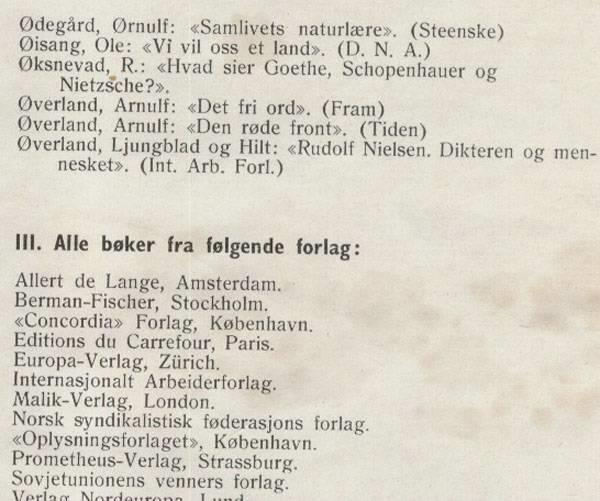A brief introduction to the Second World War in Norway - And what happened to our literary community
Published on 12 October 2015
When you are making a new world order, it is important that you control what people hear, read and watch. This was also the case during the Nazi-occupation of Europe during world war 2. All kinds of cultural expressions in the countries Germany occupied, were therefore controlled, but in various ways.
Norway was occupied by Nazi Germany on the 9th of April, 1940. People who had followed the political development in Europe for a long time, knew what they were expecting and that all kinds of cultural expressions would be censored.
That is why Jakob Friis, knew what to do when the Germans arrived in Kristiansand. This is Statsarkivet and its staff evacuating the building with all the archives. The archives were placed in the vault of a bank an hours drive from here. This building was taken over by the Germans in 1940, but it was not until 1942 that the Gestapo started using it as their head quarters.
 Illustration: Jacob Friis evacuates the Archives the day before the occupation of Norway.
Illustration: Jacob Friis evacuates the Archives the day before the occupation of Norway.The Germans established a Reichskommissariat, and collaborated more or less through the five years of occupation, with the Norwegian Nationalist government. In the beginning the Germans didn’t want to completely restrain Norwegian culture because they believed it had some value. The Norwegian culture was to be controlled, but not completely replaced by another. The Nazis wanted the right Norwegian cultural expressions to unfold. Soon they found that they had little cooperation from the Norwegian cultural workers, and gave up. The censorship and controlling of the culture, became more strict.
Forfatterforeningen, the Authors Union, soon felt the implications of the occupation. Less books were published, but more books read. Many of the Norwegian Authors were against the Germans and participated in the resistance movement, but we also had many authors and writers on the wrong side.
Knut Hamsun was perhaps the most influential and famous Norwegian author who openly supported the Nazis, and even went to Berlin to meet Hitler himself.
The Norwegian Nationalists made editions of the already existing lists from Germany over banned books soon after the occupation, and began working with removal of books from bookstores, libraries and publishing houses.
 Illustration: List of books to be confiscated, 1944.
Illustration: List of books to be confiscated, 1944.A story from the main library in Oslo, Deichmanske bibliotek, tells that the Gestapo came in civil to check shelves. Once there were found a forbidden book and one of the librarians had to go to the Gestapo office to be interrogated.
In Kristiansand several of the librarians at the public library were involved in resistance work. They also lended out books to people they could trust to take care of the books until time changed. Several public libraries had their collections removed and stored away, and they had to delete catalogue cards as well. These books should vanish. Only the bigger libraries could keep their forbidden books regarding science purposes.
One special case: Det røde bibliotek på Rjukan. This is the largest collection of «red» literature in Norway, and they have some very rare books in this collection. Workers literature, communistic literature.